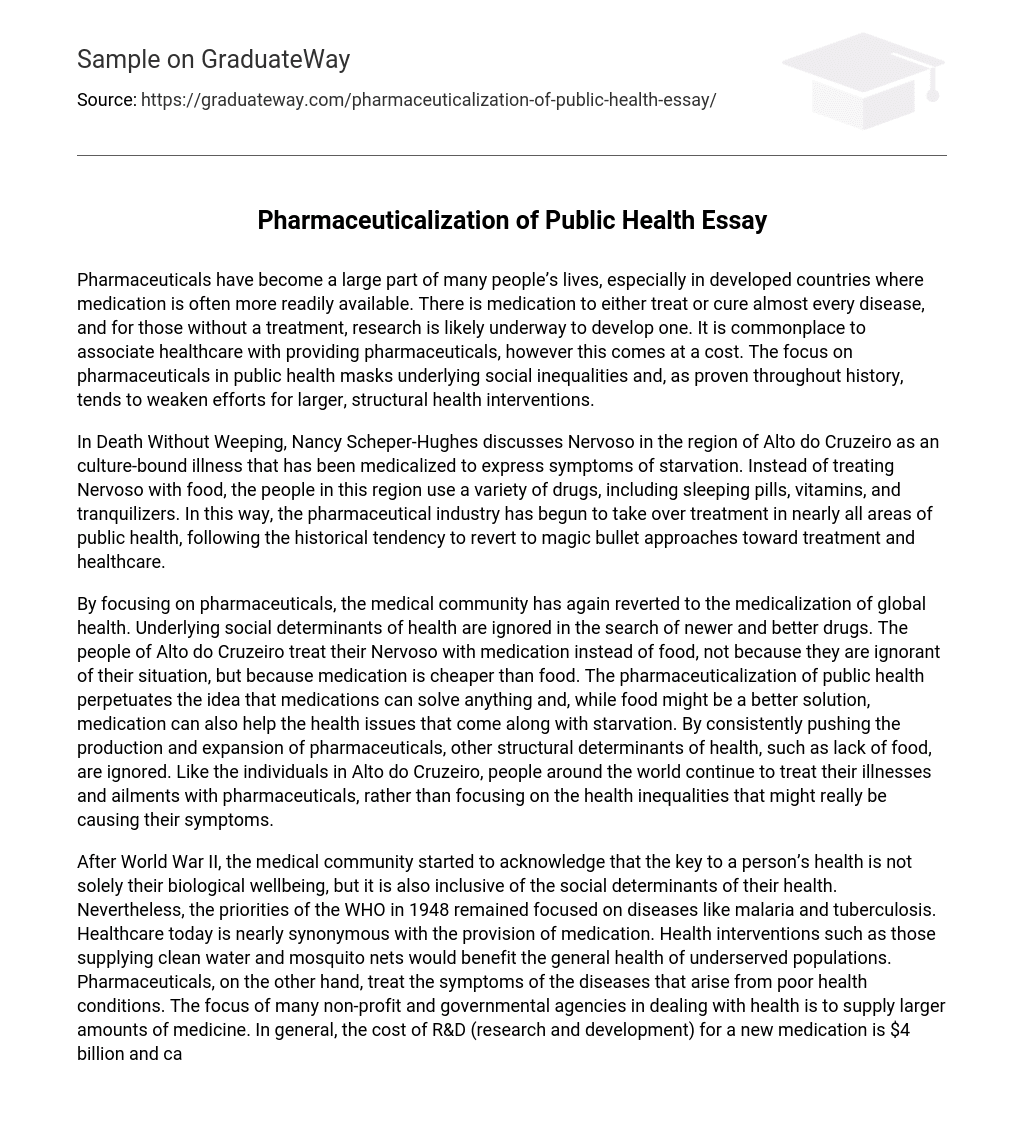Pharmaceuticals have become a large part of many people’s lives, especially in developed countries where medication is often more readily available. There is medication to either treat or cure almost every disease, and for those without a treatment, research is likely underway to develop one. It is commonplace to associate healthcare with providing pharmaceuticals, however this comes at a cost. The focus on pharmaceuticals in public health masks underlying social inequalities and, as proven throughout history, tends to weaken efforts for larger, structural health interventions.
In Death Without Weeping, Nancy Scheper-Hughes discusses Nervoso in the region of Alto do Cruzeiro as an culture-bound illness that has been medicalized to express symptoms of starvation. Instead of treating Nervoso with food, the people in this region use a variety of drugs, including sleeping pills, vitamins, and tranquilizers. In this way, the pharmaceutical industry has begun to take over treatment in nearly all areas of public health, following the historical tendency to revert to magic bullet approaches toward treatment and healthcare.
By focusing on pharmaceuticals, the medical community has again reverted to the medicalization of global health. Underlying social determinants of health are ignored in the search of newer and better drugs. The people of Alto do Cruzeiro treat their Nervoso with medication instead of food, not because they are ignorant of their situation, but because medication is cheaper than food. The pharmaceuticalization of public health perpetuates the idea that medications can solve anything and, while food might be a better solution, medication can also help the health issues that come along with starvation. By consistently pushing the production and expansion of pharmaceuticals, other structural determinants of health, such as lack of food, are ignored. Like the individuals in Alto do Cruzeiro, people around the world continue to treat their illnesses and ailments with pharmaceuticals, rather than focusing on the health inequalities that might really be causing their symptoms.
After World War II, the medical community started to acknowledge that the key to a person’s health is not solely their biological wellbeing, but it is also inclusive of the social determinants of their health. Nevertheless, the priorities of the WHO in 1948 remained focused on diseases like malaria and tuberculosis. Healthcare today is nearly synonymous with the provision of medication. Health interventions such as those supplying clean water and mosquito nets would benefit the general health of underserved populations. Pharmaceuticals, on the other hand, treat the symptoms of the diseases that arise from poor health conditions. The focus of many non-profit and governmental agencies in dealing with health is to supply larger amounts of medicine. In general, the cost of R&D (research and development) for a new medication is $4 billion and can reach as high as $10 billion (cite). The money spent on R&D diverts resources that could be better spent building up health infrastructure in poorer regions, a longer lasting and preventative solution.
The case of Nervoso in Alto do Cruzeiro exemplifies how the ubiquitous pharmaceutical industry has provided an acceptable, but unsustainable, solution for widespread hunger in the region. History has also shown that a solution that ignores health inequalities in the world is likely to fail in providing lasting health equity. The pharmaceuticalization of public health conceals inequalities, while at the same time undermining structural health interventions.





